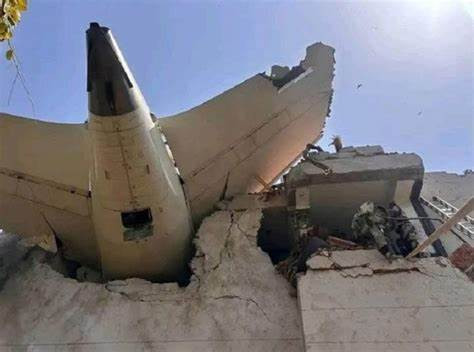
ON June 12, 2025, Air India Flight 171, a Boeing 787-8 Dreamliner carrying 242 people, crashed 30 seconds after take-off from Ahmedabad, killing 241 onboard and approximately 50 others when it struck medical students’ quarters.
To understand this aviation catastrophe, I consulted retired Air Zimbabwe pilots with over a century of combined experience.
Their analysis of the critical moments between rotation and impact reveals the intricate interplay of physics, technology, and human judgment that defines flight — and how quickly it can unravel.
The Observers
Captain Alex Makanda and Captain Fiddler Mutambirwa, both former Air Zimbabwe captains with thousands of flight hours, joined Richard Mhene, a pilot and flight inspector, and Jabu Nkomo, a seasoned aviation engineer (electronics / avionics) to dissect the disaster.
These veterans, who have navigated their own emergencies, approach the tragedy with the methodical precision of seasoned aviators, not armchair critics.
Their discussion illustrates how professionals think about accidents — not with hindsight’s clarity, but with an acute awareness of aviation’s delicate balance.
The evidence
- Govt takeover of Cottco set for July
- Govt takeover of Cottco set for July
- Mnangagwa defends Chinamasa appointment
- Mnangagwa defends Chinamasa appointment
Keep Reading
With limited evidence — grainy video of the aircraft’s final moments, witness reports of a “bang” followed by smoke, and a mayday call before communication ceased — the pilots constructed possible scenarios.
Each theory was tested against their deep understanding of aircraft behaviour and crew procedures, reflecting aviation’s demand for evidence-based conclusions.
The human factor theory
An external airline pilot with 15 000 hours suggested a chilling possibility: the aircraft may have taken off with incorrect flap settings — position one instead of the required position five for its weight and conditions.
Combined with intentionally-reduced (derated) thrust and failure to retract landing gear promptly, this could have placed the aircraft in a perilous aerodynamic state — too slow, with excessive drag, on “the wrong side of the speed versus drag curve”.
At low altitude, recovery from such a configuration is nearly impossible.
Captain Mutambirwa, however, urged caution.
“The videos are too distant to confirm flap position,” he said, embodying the skepticism that guards against premature conclusions. His restraint highlights the discipline required in accident analysis, where assumptions can mislead without hard evidence.
The mechanical failure possibility
Captain Makanda pointed to another troubling scenario, referencing whistleblower reports about substandard parts in Boeing 787s.
“I was surprised the crew didn’t raise the landing gear,” he noted, observing that the aircraft climbed only to 600 feet before crashing.
Mhene deepened this theory, citing an Air India pilot’s claim that this specific aircraft had recurring engine issues.
More disturbingly, allegations surfaced that crews faced pressure to overlook such faults to meet operational demands — a potential erosion of aviation’s safety-first ethos. This possibility raises questions about maintenance practices and quality control. If true, it suggests systemic issues that could compromise even the most robust aircraft, underscoring the need for rigorous oversight in manufacturing and operations.
The power loss scenario
Nkomo offered the most alarming theory, noting reports that the aircraft’s Ram Air Turbine (RAT) deployed during take-off.
The RAT, an emergency system, activates only when primary electrical and hydraulic power fails.
“If the RAT deployed, it indicates a total power failure to critical systems,” Nkomo explained.
At low airspeeds post-takeoff, the RAT might not generate enough power to restore control, leaving the crew unable to operate landing gear, flight controls, or other systems. This would explain the loss of communication, the un-retracted gear, and the aircraft’s unresponsiveness — a sophisticated machine reduced to an unpowered projectile in seconds.
This scenario paints a grim picture of pilots battling impossible odds, their skills rendered powerless by physics. It underscores how quickly an emergency can overwhelm even experienced crews when time and altitude are scarce.
Unforgiving mathematics
The pilots’ analysis reveals a stark truth: aviation is governed by unforgiving physics.
“Planes don’t just fall out of the sky,” Captain Makanda said.
Modern aircraft, with their redundant systems, are engineering marvels, yet they remain subject to aerodynamic laws that offer no mercy when margins are breached.
Whether due to human error, mechanical failure, or both, Flight 171 lacked the altitude and time needed for recovery — a reminder of how thin the line is between flight and disaster.
The pressure of seconds
The pilots emphasised the brutal time constraints of aviation emergencies.
“Sixty seconds is an eternity in a crisis like that,” Nkomo noted. In that fleeting window, the crew had to diagnose the issue, execute procedures, communicate with air traffic control, and arrest the descent — all while grappling with a potentially unrecoverable situation.
An external analyst critiqued the crew for prioritising the mayday call over flying the aircraft, but the pilots were more empathetic.
“When disaster strikes, the urge to communicate is human,” Mhene said, acknowledging that such instincts, while not optimal, reflect the chaos of catastrophic failure.
This perspective highlights the human element in aviation, where split-second decisions under extreme pressure can mean the difference between survival and tragedy.
Professional skepticism
Throughout their discussion, the pilots displayed rigorous skepticism, a hallmark of aviation’s safety culture.
“Until the Flight Data Recorder and Cockpit Voice Recorder are decoded, everything’s an assumption,” Nkomo stressed.
They challenged each other’s theories, questioned the evidence’s limitations, and avoided definitive conclusions. This humility is not indecision but wisdom, reflecting the industry’s commitment to evidence-based investigation over speculation.
Captain Mutambirwa’s caution about the flap-setting theory, for instance, underscores the need to await concrete data.
Similarly, Captain Makanda’s and Richard’s concerns about mechanical issues and operational pressures were framed as possibilities, not certainties, pending further investigation.
Broader implications
The Air India 171 disaster raises uncomfortable questions about aviation safety in 2025. Allegations of crews being pressured to ignore faults suggest that financial and operational strains — global crew shortages, rising flight volumes, and cost-cutting — may be testing safety margins. Recent Boeing controversies over manufacturing quality further highlight the critical role of aircraft integrity.
These systemic issues, if confirmed, could erode the safety culture that has made aviation remarkably safe. The pilots’ discussion also underscores the centrality of human factors. The crew of Flight 171 were seasoned professionals, trained for emergencies and backed by thousands of hours of experience. Yet, at low altitude with minimal airspeed, even their expertise may have been insufficient against a catastrophic failure.
This is not a critique but a recognition of aviation’s complexity, where human judgment and mechanical systems must align perfectly to avert disaster.
Looking forward
The retired Zimbabwe pilots’ analysis mirrors the meticulous process that drives aviation safety. Their methodical approach — examining evidence, testing theories, acknowledging uncertainty — reflects the industry’s commitment to learning from tragedy. Whether Flight 171’s cause proves to be human error, mechanical failure, or systemic pressures, the investigation’s findings will shape future safety measures.
The 241 lives lost, and the additional 50 on the ground, demand the full truth.
These veteran pilots understand that truth emerges not from rushed judgments but from the painstaking analysis of data, a process that has fortified aviation’s safety record over decades. Their insights honour the complexity of flight and the professionals who strive to keep tragedies such as Flight 171 rare in the remarkable story of human aviation.
- Bangure is an aviation enthusiast and technology analyst contributing to the Zimbabwe Independent. The aviators are retired Zimbabwe airmen, who provided their analysis voluntarily for educational purposes.











